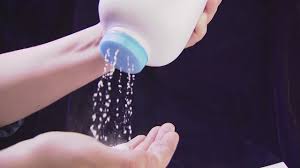Recent lawsuits against pharmaceutical giant Johnson & Johnson have
ordered the company to compensate women millions of dollars. Take the
most recent lawsuit for example: on October 27, a jury ordered Johnson
and Johnson to pay Deborah Giannecchini more than $70 million after she
claimed that years-long use of their product caused her ovarian cancer.
Giannecchini isn’t alone in her claims. In fact, thousands of similar cases have been filed against the company.
Previous cases with similar details have been thrown
out of court for lack of evidence, while still others ended in verdicts
like Giannecchini’s, in which Johnson & Johnson has been required
to pay tens of millions to victims’ families.
While Giannecchini’s jury found enough evidence to decide that
Johnson & Johnson misled the public by keeping the link between
ovarian cancer and talcum powder hidden, scientific experts aren’t sure
the link is meaningful.
Johnson & Johnson plans to appeal the verdict on the basis that their product is safe.
So what should you believe? Here’s everything we know, based on the research.
 |
| Does Baby Powder Really Cause Cancer? |
The claim: Talcum powder contains a cancer-linked mineral.
False. Talc, a natural mineral comprised of
magnesium, silicon and oxygen, is often used in powders meant to absorb
moisture and reduce friction. In its purest form, talc can also contain
the mineral asbestos, which is associated with lung cancer when
its fibers are inhaled over an extremely long period of time. But that
doesn’t mean there is a relationship between talcum and other various
cancer. And in any case, all talcum products on U.S. shelves have been asbestos-free since the 1970s.
The claim: Talcum powder is a risk factor for ovarian cancer.
The jury’s still out. It’s hard for researchers to actually test if
purified talcum powder causes ovarian cancer, as it would be unethical
to ask a group of women to apply a potentially carcinogenic substance to
their bodies for decades to see if they develop tumors. And small case
studies that ask participants to self-report baby powder use can be
unreliable. This is because individual memory can be shoddy, and there
is no standard way to measure how much talcum powder was sprinkled on
the genital area, as well as other factors could be impacting it.
The few studies that exist are contradictory. In some lab studies, scientists
exposed asbestos-free talc to animals, which resulted in an increase in
tumor formation in the animal. But other studies have not seen the same
result, according to the American Cancer Society.
And smaller studies in which women self-reported talcum use has shown a slight increase in risk. But other studies have shown no increase.
So what should you think?
While the International Agency for Research on Cancer considers genital use of talc-based body powder as “possibly carcinogenic to humans,” the evidence that baby powder leads to ovarian cancer is far from conclusive.
If you’re uncomfortable with the possibility of a connection between
baby powder and ovarian cancer, but still need something to solve
chafing or absorb moisture, there are alternative products on the
market. Burt’s Bees Dusting Powder is cornstarch-based, and Johnson’s has a pure cornstarch alternative as well. The Honest Company manufactures its baby powder using a cornstarch and kaolin clay blend instead of talcum.
To read the full article from the Huffington Post, click here!
Source : skinnymom.com

0 Response to "Does Baby Powder Really Cause Cancer?"
Post a Comment